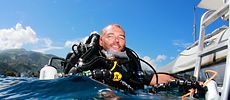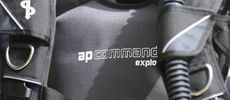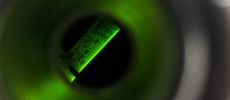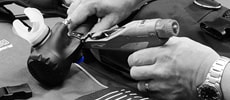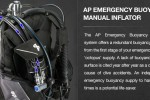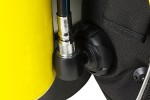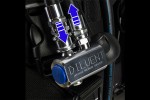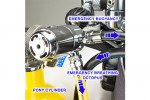You need ‘spare air’ gas for breathing – but you also need it for buoyancy.
In many scenarios the diver has had gas in reserve for breathing and has made a successful ascent but then on reaching the surface has no inflation gas source and is too stressed or exhausted to orally inflate. Without an emergency buoyancy gas source the diver fails to stay afloat.
Being ready for problems in advance is best practice and an independent emergency buoyancy supply to hand at all times is common sense.
AP BCDs and rebreathers have always had the option of an emergency mini-cylinder for this purpose. The Emergency Buoyancy Inflator system offers another option.
The BCD shown in the photo with the inflator routed over-the-shoulder from a pony is just one configuration suggestion. Obviously other set-ups are possible: e.g. using a twin cylinder with separate first stages or with the 3 litre pony side-mounted or inverted and the inflator routed differently around the BCD. The hoses feature re-usable fittings which allow the diver to easily shorten them to suit whatever configuration they prefer.
The Emergency Buoyancy Manual Inflator system consists of an inflator block, 2 medium pressure hoses to and from this block – one with a universal 3/8” UNF fitting for the medium pressure port of a first stage and the other which feeds gas to a post & adaptor inlet on the BCD.
There are 2 types available with different inlet posts for pre-2007 and post 2007 AP (or BUDDY) jackets and wing style BCDs.
Codes: APEBI (pre-2007), APVEBI (post-2007)

